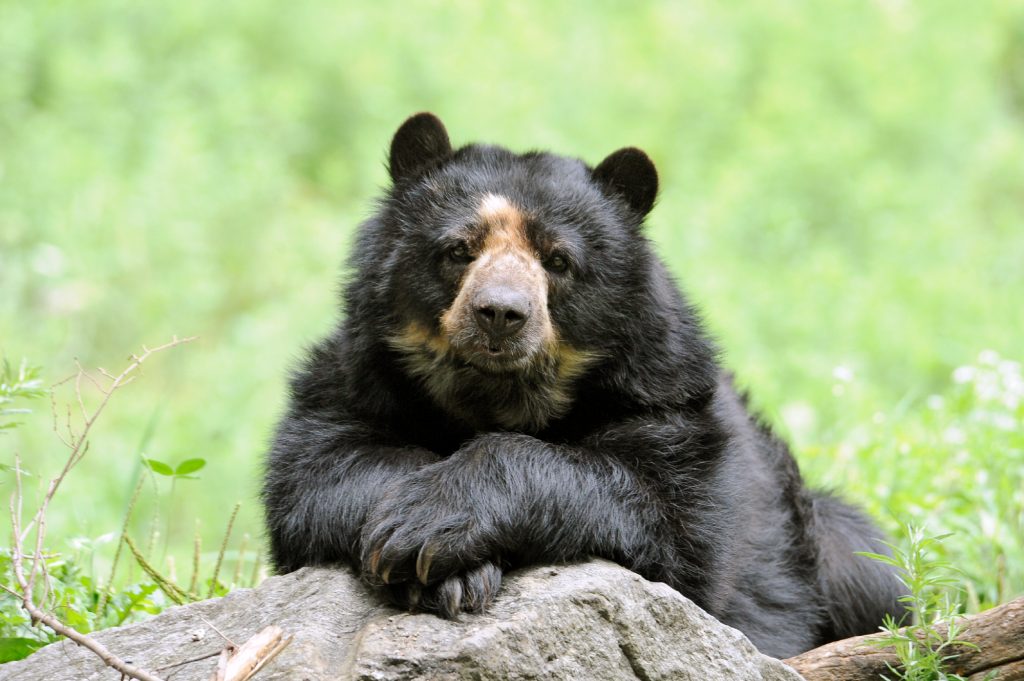Although this bear is typically diurnal, very little is known about them in the wild, as they are shy and tend to avoid humans, making them hard to find for researchers to study! The bears are native to the Andean countries from Venezuela to Bolivia, living in forests, grasslands, and scrublands.
They are true arboreal bears, using their long, sharp front claws to climb and forage for food. They build leafy platforms in the trees, both in the wild and in zoos, which they may use to feed and sleep. Because of their tropical native climate, Andean bears do not hibernate and are active year-round. Their biggest threats come from humans, directly or indirectly.

Andean bears are mainly plant eaters, dining on fruit, bromeliads, and palms, and are the most vegetarian members of the bear family, aside from the bamboo-eating giant panda.
Curious cubs. A female gives birth to one to three cubs in a protected, out-of-the-way den, but almost nothing is known about how she chooses her den site, which is thought to be a nest made under tree roots or rocks. The newborns’ eyes don’t open until they are about 42 days old.














